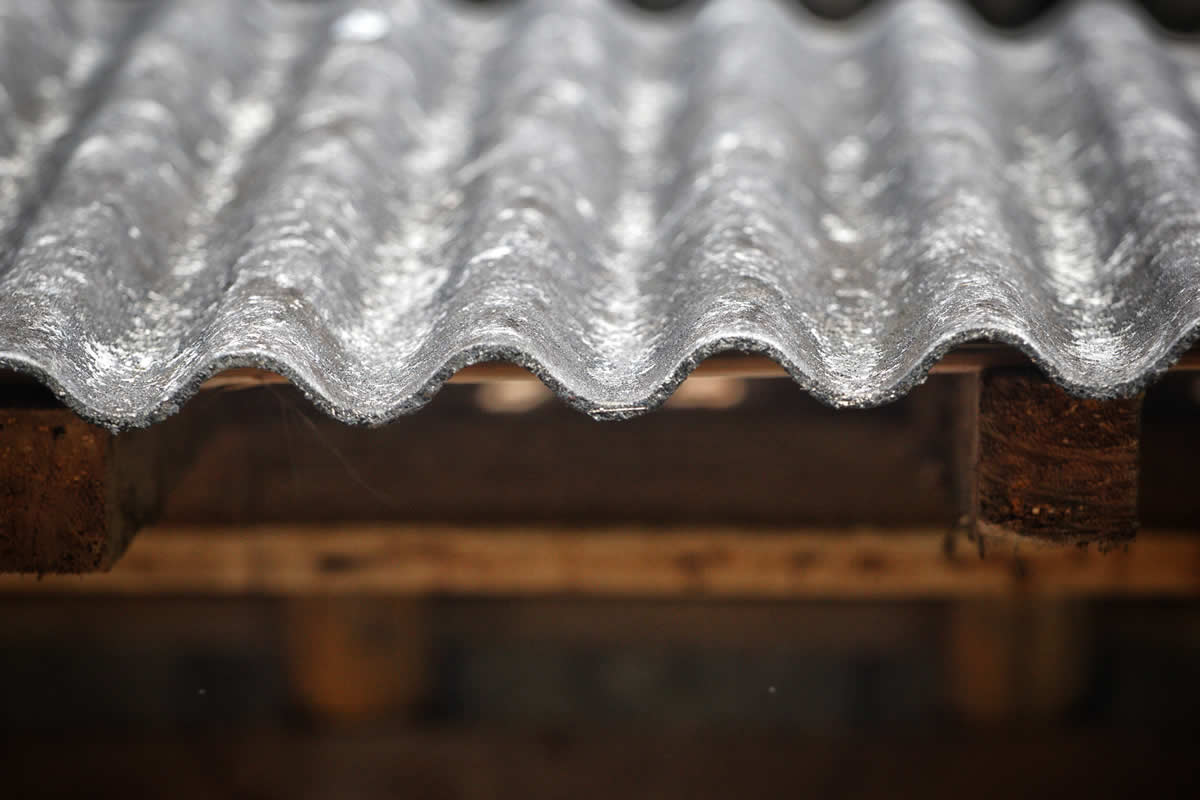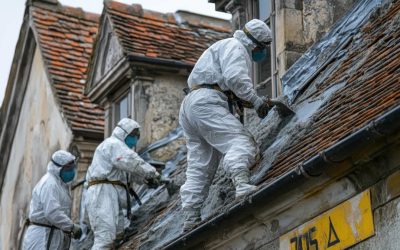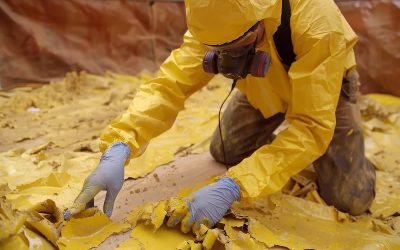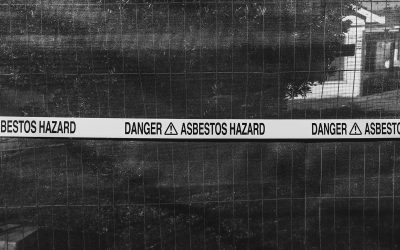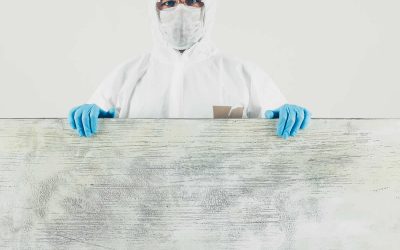In your house the walls smell faintly of dust and paint. Floorboards creak. Pipes hum. Somewhere inside the structure, asbestos could be waiting. You want to know where to look, what to avoid, and how to judge the risk.
This guide walks you through every likely hiding place. Sentences stay short, links between words stay tight, so each idea lands clear and close. By the end, you will move through any building with sharper eyes and steadier nerves.
Why asbestos hides in so many places
Builders loved asbestos for most of the last century. The fibres resisted heat, damp, acid, and noise. They mixed it into cement, plaster, glue, and paint. They wove it into cloth and rope. The UK banned blue and brown asbestos in 1985 and banned white asbestos in 1999, yet millions of properties still hold leftover products. Anything built or refurbished before 2000 can contain asbestos somewhere in its shell. That includes homes, schools, hospitals, factories, farms, and even vehicles.
A quick rule before you search
Look first at the date. If a room, roof, or pipe went in after 2000, risk drops close to zero. If it went in between 1985 and 1999, you may still meet white asbestos. If it sits before 1985, any of the six fibre types could be present. Keep that timeline in mind as you read each area below.
Inside your home—room-by-room scan
Loft and roof space
You climb the ladder. A bare bulb swings. You see grey sheets that line the rafters. Those sheets could be asbestos-cement. The water tank on the joists might be made of the same mix. You spot loose white fluff around an old hot-water pipe; that fluff could be lagging that holds amosite fibres. Even the cardboard-like pad under the header tank lid can hold chrysotile.
Ceilings and walls
In the hallway you stare at a swirled, raised pattern. That textured coating—often called Artex—may contain asbestos if it predates the ban. Upstairs, partition walls between bedrooms might use asbestos insulating board (AIB). It looks like plasterboard yet feels denser and heavier. Around the fireplace you may see a flat panel that shields heat; panels like that often relied on asbestos for fire-proof strength.
Floors
You kneel on a vinyl tile that shows a speckled pattern common in the 1970s. Many such tiles contain chrysotile, trapped in the vinyl mix. Below the tile, a black bitumen adhesive sticks it to the subfloor; that glue can also hold fibres. Pulling up tiles without testing can spread dust and fragments fast.
Kitchen
Open the cupboard under the sink. A thick pad lines the steel bowl to dull noise; older pads used asbestos felt. Look behind the cooker, where a sheet guards the wall from heat. Thin white gaskets inside an ancient boiler may carry fibres too. Even the fuse board by the door could rest on a backing plate made from pale AIB.
Bathroom
Between bath and wall you find a panel. Builders liked AIB here because it stayed rigid in damp air. Around the airing-cupboard flue you may notice rope-like seals; many seals came from braided asbestos.
Hidden elements in the structure
Pipe lagging and boiler jackets
Central-heating pipes in 1960s houses often wore a thick, crumbly jacket. That jacket can hide crocidolite fibres. Old boilers sometimes came with pre-formed asbestos blankets—a slot-on shell that looks like clay.
Ducts and service risers
Lift a ceiling tile in a tower block and you find square metal ducts. Around each joint you may see a white, plaster-like paste. That paste, called fire-stop or bulkhead jointing compound, can be rich in fibres.
Fire doors
Many doors rated for one hour of fire resistance, fitted before 1990, used thin asbestos boards in their core. You cannot see the board, yet the extra weight hints at its presence. Labels fade or fall off, so age and heft guide you here.
Electrical parts
Behind a ceramic light fitting you might spot a dusty washer. Old washers, arc chutes, and spark suppressors relied on asbestos to resist heat. Even the slots in vintage night-storage heaters used chrysotile sheets.
Exterior clues—walk round the shell
Roofs and guttering
Stand outside and look up. A garage may carry corrugated cement sheets; shallow ridges and moss streaks mark them. Lean-to extensions, sheds, and farm buildings often show the same pattern. Fascia boards, soffits, and downpipes might use smoother cement that hides fibres in a flat mix.
Walls and cladding
Flat sheets fixed with rows of bolts can indicate asbestos cement. Infill panels under windows, called spandrel panels, sometimes contain AIB behind the outer skin. Air-brick covers may be small cement grids that slip into brick cavities.
Flues and chimney liners
Slim, round cement pipes served oil boilers and solid-fuel stoves for decades. They look like grey drainpipes yet feel lighter. Some chimney stacks hold a blue plaster-looking lining that was sprayed into place.
Garages and outbuildings
Pre-fabricated garages from the 1960s and 70s use asbestos-cement panels tied to metal frames. Check door surrounds, corner trims, and even the ridge capping strip; all may share the same material.
Garden and ground risks
A previous owner might have broken an old roof and buried fragments behind the shed. Garden borders sometimes show white shards mixed with soil. Asbestos cement does not rot, so fragments linger for decades. Raised-bed sleepers salvaged from industrial sites can include asbestos paint flakes. When you dig or plant, wear a mask if you see flat grey chips or fluffy white dust near soil edges.
Workplaces and public buildings
Factories and power stations
If you tour an old plant, look at steam pipes: they often hold thick, white lagging bound with metal wire. Turbine rooms may still show sprayed fire-proof coatings on beams, especially high up where repainting is rare. Large electrical switchgear sometimes rests on heat-resistant AIB plinths.
Schools and colleges
Many classrooms built in the 1960s have ceiling tiles speckled with pinholes. Some tiles hide chrysotile. Notice the stage curtain in an assembly hall; woven asbestos cloth once served as a fire curtain. Storage cupboards for science labs often used AIB shelves to resist chemical spills.
Hospitals and care homes
Service corridors carry a maze of pipes—all prime spots for lagging. Lift motor rooms may still hold brake linings that use asbestos composites. In older operating theatres, wall linings once relied on fibre boards for sterile, heat-proof surfaces.
Transport and vehicles
Before 1999, brake pads, clutch plates, and some engine gaskets in cars carried chrysotile. Classic cars still on the road may hold original parts. In ships, bulkhead linings, deck tiles, and pipe insulation all featured fibres. Railway carriages built mid-century often used asbestos for heat shields near wheels and heating ducts.
Consumer items you might still own
An ironing board from the 1970s could hide a heat-proof asbestos pad under its cover. A vintage hair dryer or toaster may have white fibre mats inside. Old domestic heaters sometimes use asbestos cards as heat shields. If you collect antiques or retro tools, keep age in mind.
Four key spots most people miss
- The bitumen glue under vinyl tiles in hallways.
- Thin packing pieces behind skirting boards that level floors.
- Small gaskets in range cookers and stove doors.
- Window putty in metal frames from 1950s schools.
Each looks harmless yet can release fibres if scraped or drilled.
Soil, rubble, and recycled fill
Contractors sometimes crush demolition waste for driveway sub-base. If that waste once held asbestos cement, fibres can mix into loose aggregate. Check delivery notes before you accept “type 1 hardcore” from unknown sources. When you landscape, watch for pale, flat shards that flake at the edges.
What to do when you find suspect material
You have three clear options:
- Leave it alone if intact and undamaged. Mark its position on a plan.
- Encapsulate it with approved paint or board if you need to work nearby.
- Remove it via a licensed contractor if it is already damaged or must be disturbed.
Testing a small sample costs little compared with removal, yet confirms risk. Always mist the area, wear an FFP3 mask, and seal debris in two bags if you must take a chip for a lab.
Cost and planning notes
Testing one item: £40–£60.
Management survey for a three-bed house: £250–£400.
Simple cement-roof removal: £500 upwards.
Complex AIB strip-out: four figures fast.
Plan early. Removal often needs a 14-day notice to the Health and Safety Executive (HSE). Waste crews must carry a hazardous-waste licence. Skip companies refuse mixed loads if they see fibre warning stamps.
Clearance and peace of mind
After removal, an independent analyst runs air tests. Pumps draw samples over four hours. Results must read under 0.01 fibres per millilitre before the area reopens. Keep that clearance sheet with your property papers; buyers and insurers may ask later.
Wrap-up
Asbestos hides where fire once threatened or heat once built up—roofs, pipes, walls, floors, and countless small seals. Use the build date as your first filter, the product type as your second, and the location as your third. When doubt lingers, test. When results show fibres, choose safe management or licensed removal.
Next time you enter an old shed, loft, or plant room, let your eyes slow down. Trace pipes, tap boards lightly, and note textures. Each pause buys safety. Each informed step keeps lungs clear. You now hold the map. Walk with care, share what you know, and help others see the hidden threads before they breathe them.
Are you looking for Asbestos Disposal in Gloucestershire? If so, contact us now!
Asbestos Removal New Barnet – Asbestos Removal Hadley Wood – Asbestos Removal Mitcham
